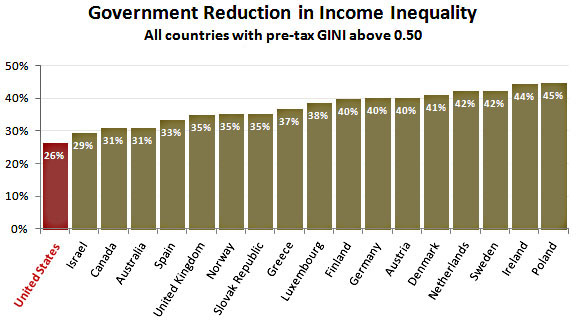Over at the Economist, Steven Mazie directs me to a recent New Yorker piece on income inequality by John Cassidy. Its most revealing chart, Mazie says, is one that compares raw income inequality in various rich countries (as calculated by GINI scores) to income inequality after taxes and government transfers. In other words, it helps us see which countries do the most to fight the relentless rise in income inequality over the past three decades.
But I wanted to see that more directly, so I re-charted the data. All I did was calculate how much taxes and transfers reduced inequality in every country that had high inequality to begin with. Unsurprisingly, whether you use raw number or percentages, the United States is #1:

The United States is one of the richest countries in the world, with a top 1 percent that’s seen its income triple or more in the past three decades. And yet, we also do the least to fight the rising tide of income inequality. Government programs in America reduce the level of inequality by only 26 percent. Nobody else is so stingy.
Happy Thanksgiving.













